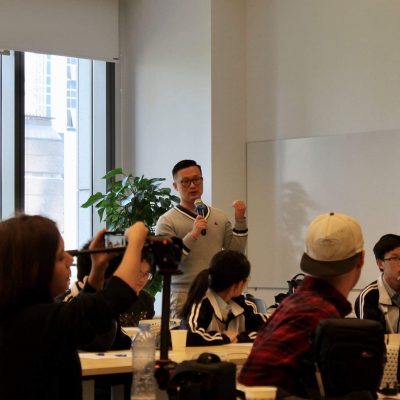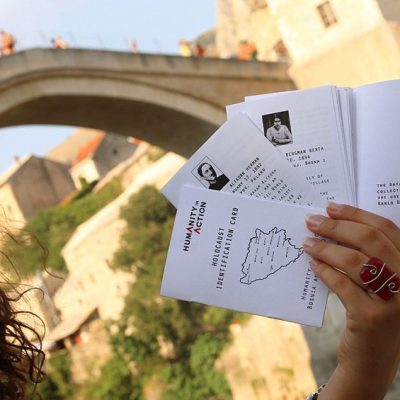Article
This Action Project addresses the topic of different education systems, and how specific narratives are structured and delivered in different education systems. Senior Fellow Sunčica’s idea was for students to notice and discuss these differences in a meaningful manner. After learning more on Shanghai’s role in the WWII refugee crisis (about 23,000 Jewish refugees emigrated to Shanghai) and, as YomHashoah, the Israeli Holocaust Remembrance Day was approaching, Sunčica decided to make the project a Holocaust education outreach project.
The goal was to commemorate the victims of the Holocaust by comparing different narratives and cultural experiences surrounding the story of the Holocaust. The project aimed to give everyone involved an opportunity to provide some narrative or experience, and for a constructive discussion to form on the basis of these differences.
The panel discussion was mostly aimed at addressing the problem of discrimination and simply learning and  discussing differences, rather than pinpointing specific deficiencies and strengths of the different experiential backgrounds. The panel consisted of professor Xu Xin from the Nanjing University, China’s leading Judaic scholar, professor Lena Scheen from the New York University (who provided not only her personal Dutch perspective, but also her research background of Shanghai’s Jewish history), two American members of Shanghai’s Kehilat, and an Israeli student from New York University. The panelists were asked to discuss a number of questions on their own experience of learning about the Holocaust, both in school and outside of a system, strategies educators should consider, and problems they might face when teaching about sensitive historical events. There was also an introductory presentation on some brief facts about YomHashoah, the Holocaust, and Shanghai’s history in the WWII Jewish refugee crisis, followed by an “identity mapping” activity where students were asked to make a network of specific aspects of their identity (such as ‘sister,’ ‘Chinese,’ ‘bilingual,’ and ‘foodie’) on a piece of paper. This activity aimed to get everyone to start thinking more about the complex aspect of identity, before talking more about an event that was shaped so much around just one specific part of peoples’ identity. After the panel discussions,
discussing differences, rather than pinpointing specific deficiencies and strengths of the different experiential backgrounds. The panel consisted of professor Xu Xin from the Nanjing University, China’s leading Judaic scholar, professor Lena Scheen from the New York University (who provided not only her personal Dutch perspective, but also her research background of Shanghai’s Jewish history), two American members of Shanghai’s Kehilat, and an Israeli student from New York University. The panelists were asked to discuss a number of questions on their own experience of learning about the Holocaust, both in school and outside of a system, strategies educators should consider, and problems they might face when teaching about sensitive historical events. There was also an introductory presentation on some brief facts about YomHashoah, the Holocaust, and Shanghai’s history in the WWII Jewish refugee crisis, followed by an “identity mapping” activity where students were asked to make a network of specific aspects of their identity (such as ‘sister,’ ‘Chinese,’ ‘bilingual,’ and ‘foodie’) on a piece of paper. This activity aimed to get everyone to start thinking more about the complex aspect of identity, before talking more about an event that was shaped so much around just one specific part of peoples’ identity. After the panel discussions,  there was a Q&A session where the high school students voiced their own opinions and asked the panelists questions. In the end, a tour of Shanghai’s Jewish refugee museum, located in the area that was formerly the Jewish ghetto where the refugees were relocated during the Second World War, was organized. This was a way of getting the project out of the confines of the classroom and closer to the histories we had just been discussing.
there was a Q&A session where the high school students voiced their own opinions and asked the panelists questions. In the end, a tour of Shanghai’s Jewish refugee museum, located in the area that was formerly the Jewish ghetto where the refugees were relocated during the Second World War, was organized. This was a way of getting the project out of the confines of the classroom and closer to the histories we had just been discussing.









